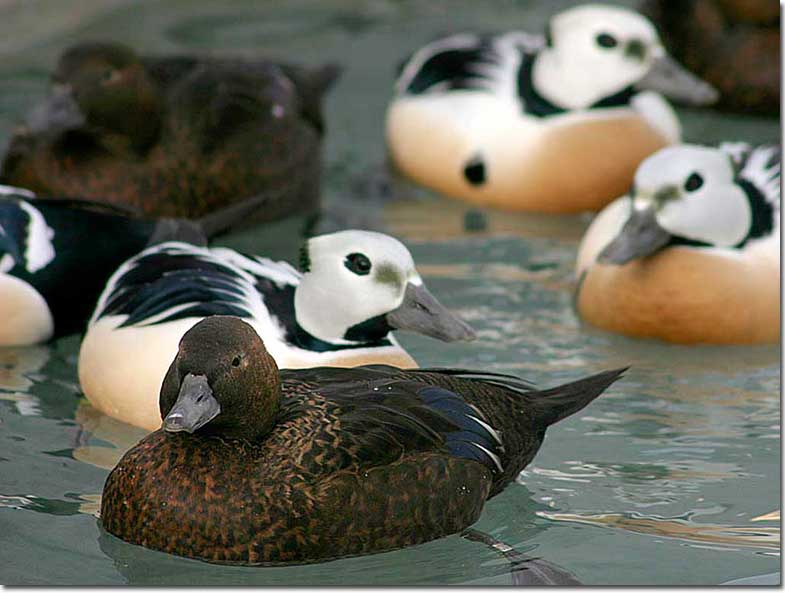
On this page
Steller’s Eider — Length 17 inches
Steller’s Eider is a small sea duck that inhabits coastal areas of the Arctic and subarctic regions. They are known for their striking appearance, with the male having a white head, black neck, and back, white sides and belly, and greenish-blue feathers on their nape, while the female has a brownish body with darker feathers on their wings.
Steller’s Eiders are found in the coastal waters of northern Russia, Alaska, and Canada during the breeding season, where they nest in shallow depressions on the ground near water. During the non-breeding season, they migrate south and can be found in coastal waters from Norway to Japan and the northern United States.
These ducks are known for their unique vocalizations and their tendency to form large flocks during the non-breeding season. They are also listed as a threatened species due to habitat loss and hunting, making them a subject of conservation efforts in many areas.

© USFWS
All the following images are © Alan Wilson
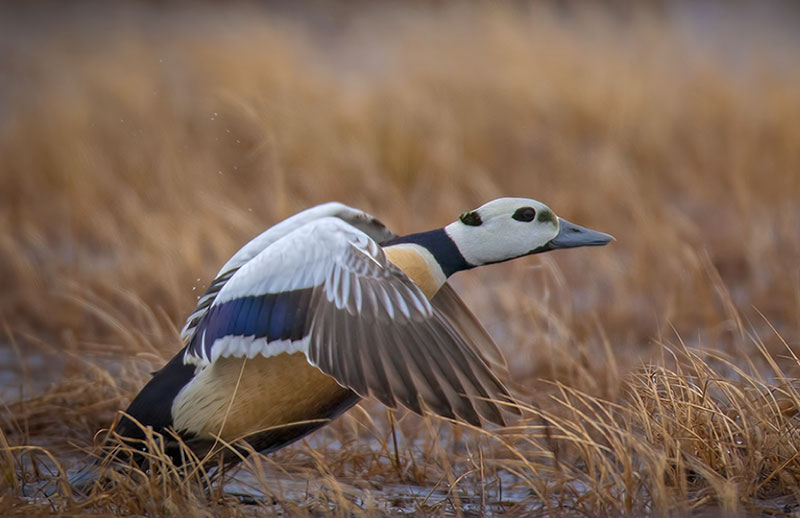
Note the colorful upper wing pattern.
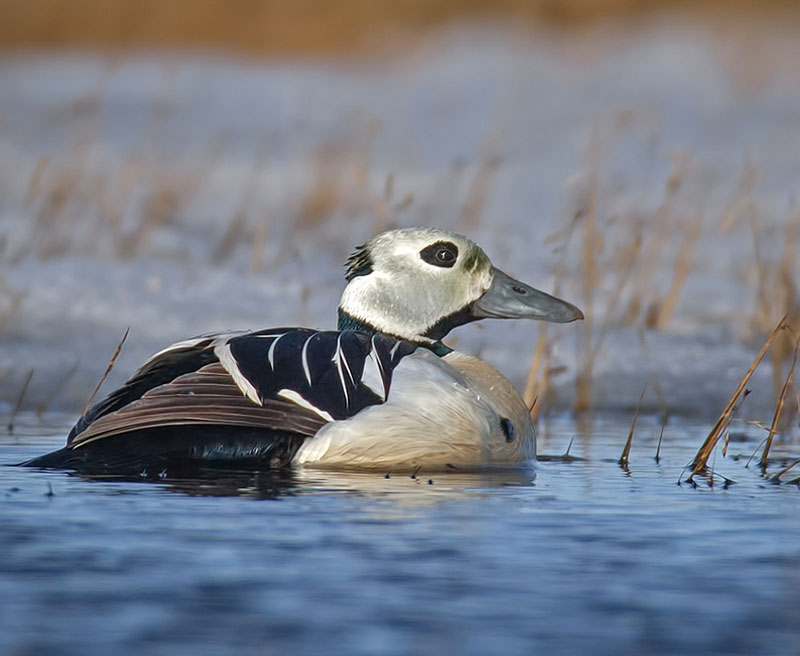
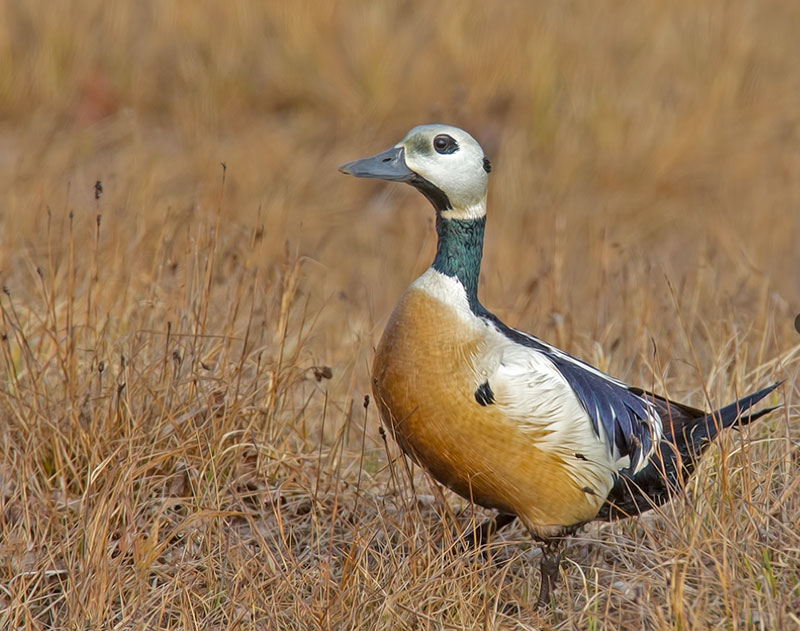
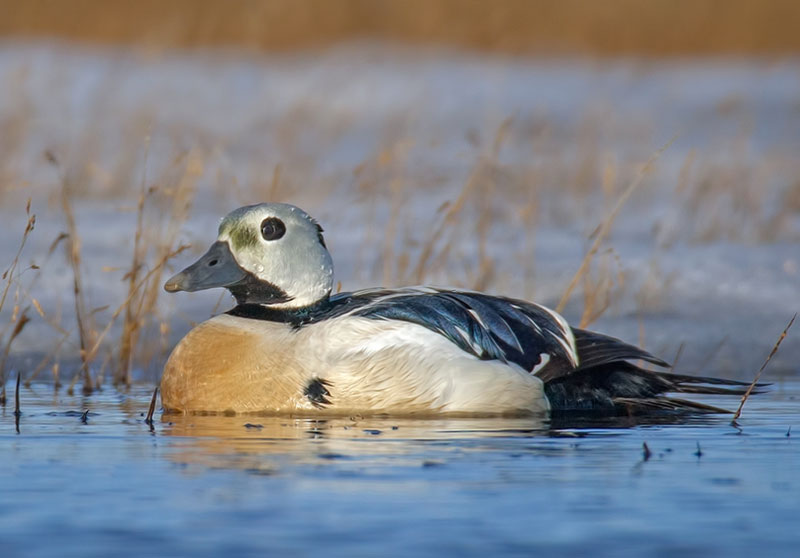
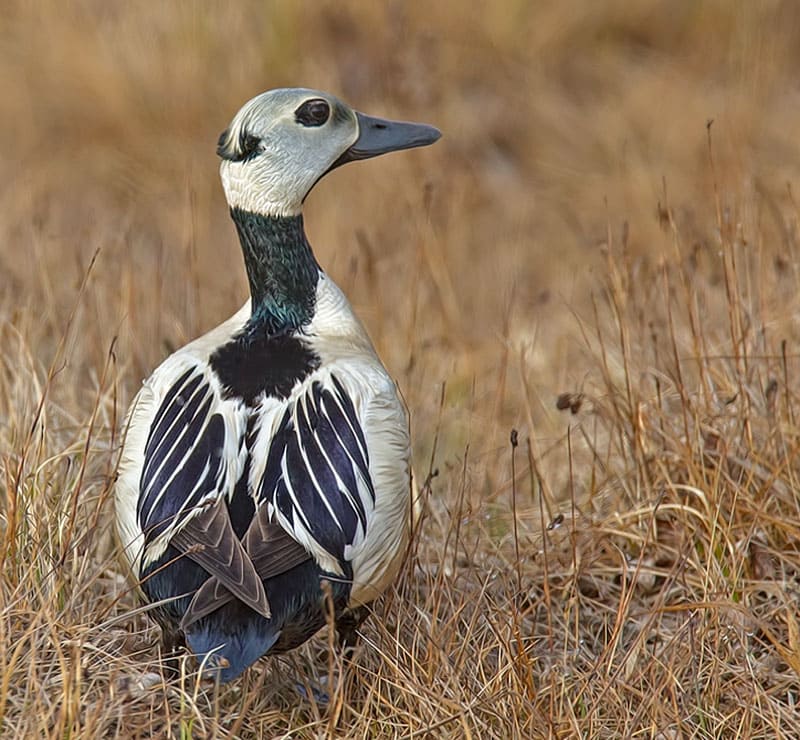
Facts:
Steller’s Eider is named in honor of the German naturalist and explorer Georg Wilhelm Steller, who collected the first specimens near Kamchatka, Russia, in 1740–1741. The Steller’s Jay of western North America is also named after him.
Steller’s Eiders distinguish themselves from Common, King, and Spectacled Eiders, all belonging to the genus Somateria, derived from the ancient Greek for “wooly bodied.” Steller’s Eider stands alone in its genus, Polysticta, originating from ancient Greek for “many-spotted.”
In Utqiagvik (formerly Barrow), Alaska, the breeding success of Steller’s Eiders is linked to the abundance of brown lemmings. When lemmings are plentiful, Steller’s Eiders produce more offspring. This correlation may be attributed to the fact that Pomarine Jaegers, among the Arctic’s most predatory birds, spend less time raiding Steller’s Eider nests when there is an ample supply of lemmings to eat.
Following the breeding season, Steller’s Eiders gather at two large lagoon systems, Nelson Lagoon and Izembek Lagoon, on the Alaska Peninsula. They molt their flight feathers before moving to their wintering grounds, a phenomenon referred to by scientists as “molt migration.”
During the winter, Steller’s Eiders form large flocks. Members of these flocks dive synchronously, creating a spray as they dive and resurface in unison.
The oldest recorded Steller’s Eider was a female who lived for at least 23 years. She was banded in Alaska in 1975 and discovered in Russia in 1997.

